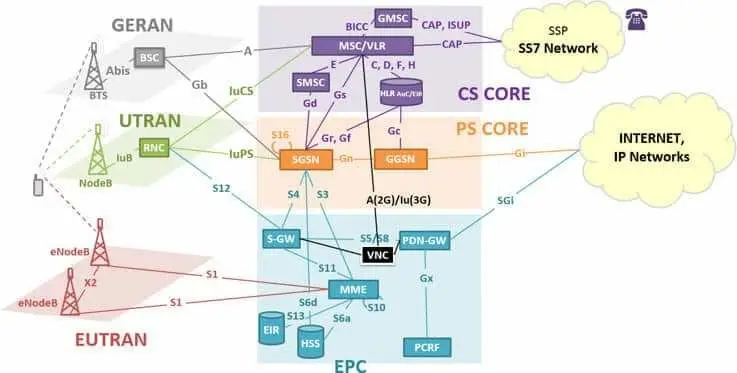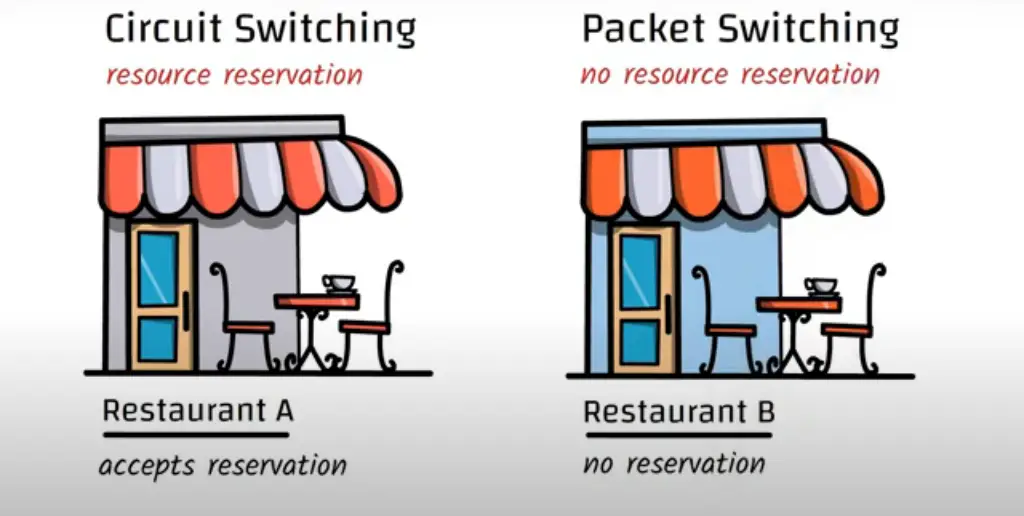As mobile technology advances, the demand for faster, more efficient networks has increased dramatically. Both LTE (4G) and 5G networks rely on packet switching, a method fundamentally different from traditional circuit-switched networks used in earlier generations like 2G and 3G. This transition has reshaped how data flows in mobile communication, bringing distinct benefits to modern cellular networks. Here, we’ll explore the differences, benefits, and reasons for packet switching’s dominance in LTE and 5G.
A Quick Overview of Circuit-Switched and Packet-Switched Networks
- Circuit-Switched Networks: Circuit switching was the standard in older networks (such as 2G and 3G). It establishes a dedicated, continuous path for the duration of a call or data session, making it reliable for real-time voice communication but less efficient in terms of resource usage.
- Packet-Switched Networks: Packet switching is the foundation of both LTE and 5G networks. It splits data into packets, allowing each packet to travel independently across the network, optimizing bandwidth and improving flexibility. Packet switching is especially suited for high-speed data needs and supports the varied demands of modern applications.
Why LTE and 5G Rely on Packet Switching
In the transition from 3G to 4G and now to 5G, mobile networks needed to support a vast increase in data traffic, higher speeds, and seamless connectivity across devices. Packet switching meets these needs with greater efficiency than circuit switching, enabling LTE and 5G to provide faster speeds, lower latency, and higher capacity. Here’s why packet switching became the core of these networks:
- Bandwidth Efficiency: Packet switching uses network resources dynamically, allowing many users and applications to share the same network paths. In contrast, circuit switching dedicates a specific path to each call, leading to inefficient use when traffic is low.
- Adaptability to Different Applications: LTE and 5G support diverse applications such as video streaming, VoIP, and IoT devices, all of which have varying data demands. Packet-switched networks accommodate these needs seamlessly, whereas circuit switching is limited to straightforward, real-time voice communication.
- Support for IP-Based Traffic: Packet-switched networks in LTE and 5G are fully IP-based, aligning with the Internet’s architecture and supporting seamless integration with online services. This capability is essential for modern applications, which are primarily web-based and require high-speed, reliable IP connections.
Circuit Switching in the Past vs. Packet Switching in the Present
Here’s a breakdown of how circuit switching was used in 2G and 3G networks and how packet switching has transformed LTE and 5G:
| Feature | 2G/3G (Circuit Switching) | LTE/4G & 5G (Packet Switching) |
|---|---|---|
| Primary Use Case | Voice calls | Data-intensive apps, HD video, IoT |
| Network Efficiency | Lower efficiency due to dedicated lines | High efficiency with shared resources |
| Latency | Higher latency, not optimized for low latency | Ultra-low latency for real-time applications (5G) |
| Reliability for Voice | High reliability in dedicated voice calls | Reliant on VoLTE for high-quality voice on packet-switched networks |
| Scalability | Limited scalability | Highly scalable, supporting millions of devices (IoT) |
Voice Over LTE (VoLTE): Enabling Voice on Packet-Switched LTE
LTE was designed to be entirely packet-switched, leaving voice transmission a challenge in a domain traditionally managed by circuit-switched networks. Enter Voice over LTE (VoLTE):
- How VoLTE Works: VoLTE uses IP packet switching to carry voice calls over the LTE network. VoLTE packets are prioritized and transmitted with low latency, ensuring high-quality voice even in a packet-switched environment.
- Benefits of VoLTE: VoLTE delivers clear, HD-quality voice and supports additional features like video calls, which aren’t feasible on circuit-switched systems. It also enables seamless handovers to Wi-Fi calling, ensuring connectivity even when cellular signals are weak.
5G takes this concept further by enhancing the quality of real-time communications with even lower latency, further proving that packet switching can handle voice and data in one unified framework.

This figure shows the differences between 2G, 3G, and 4G CS and PS cores
5G and Packet Switching: Meeting Future Connectivity Needs
5G networks were designed to address diverse use cases, from ultra-reliable, low-latency communication (uRLLC) to massive machine-type communication (mMTC) for IoT. Packet switching in 5G is optimized to support these capabilities, with features such as:
- Network Slicing: Allows the creation of virtualized network “slices” optimized for specific applications (e.g., autonomous vehicles, smart grids). Packet-switched architecture makes it possible to allocate bandwidth dynamically, enabling each slice to meet the required service-level agreement.
- Edge Computing: Reducing latency by processing data closer to the user, which is made possible by packet switching. Edge computing aligns well with the distributed nature of packet-switched networks, particularly beneficial for applications like AR/VR and autonomous systems.
- Massive IoT Support: Packet switching allows 5G to support billions of IoT devices, with efficient data handling and lower power requirements, essential for devices with limited battery life.
Key Takeaways: Packet Switching as the Backbone of LTE and 5G
- Efficiency and Scalability: Packet switching enables LTE and 5G to handle massive amounts of data, accommodating high-speed internet, streaming, and IoT. Circuit switching, though reliable for voice, cannot match this efficiency in data-heavy environments.
- Low Latency and Real-Time Applications: 5G, in particular, targets ultra-low latency. Through packet switching, it can meet the demands of real-time applications like telemedicine, remote surgery, and autonomous vehicles, which were not feasible with older circuit-switched networks.
- Unified Network for Voice and Data: With technologies like VoLTE, LTE and 5G successfully integrate voice over packet-switched networks, delivering high-quality calls without separate circuit-switched infrastructure.
Conclusion: Packet Switching Powers LTE and 5G’s Future
The shift to packet-switched architecture has enabled LTE and 5G networks to meet the demands of modern applications, from high-definition video streaming to IoT connectivity. While circuit switching laid the groundwork for early mobile communication, packet switching has allowed LTE and 5G to unlock unprecedented network potential, efficiency, and scalability.
In a world increasingly driven by data, packet-switched networks are essential, ensuring LTE and 5G can support evolving digital needs with high performance, reliability, and versatility.
This information is part of our Cellular Network Program
Check out our programs here: http://ietc.training/programs

